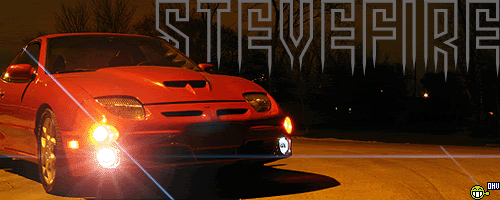Just wanting to know of anyone elses experience with either of these sensors.
On a turbocharged application, the Bosch Wideband Sensor calls for it to be mounted at least 36" (IIRC) back from the exhaust outlet. The reason for this is because of the sensors low heat range (900*F). Turbocharged engines can put out a LOT more heat then that, which is why its required to be mounted back further. Simply to allow the exhaust to 'cool' so as not to damage the sensor.
Does anyone see a problem with this?
The gases have already since passed from the outlet, and have had to travel a total of 36" to reach the sensor. You're waiting a certain amount of time before it actually gets to the sensor. Combustion has already taken place inside the cylinder, then its got to travel past the valve, out the port, through the manifold, out the turbine, then 36" downstream of that!
How can you rely on something that's giving you information that's since past a few cycles ago?
How fast do exhaust gas velocities get outside the turbine? Its clearly dependant on outlet diameter and downpipe diameter, but how quickly will it get to the WB?
I have seen a lot of local DSM guys use NTK sensors on their wideband setup (namely the
Tech Edge DIY-WB setup with the L2H2 sensor) and they've only mounted them a mere 4" away from the turbine outlet. There's obviously a reason behind them using these, and it appears to be the sensors high tolerance of heat, thus allowing a quicker response. Combustion occurs, passes valve, out port, through manifold, turbine, and then only 4" downstream.
My real question is, am I worrying too much about using a Bosch Sensor 36" downstream to tune my turbo setup? Will the exhaust gases still get to the sensor quickly enough to depict an accurate reading quick enough to act on?
Ultimately, the NTK WB o2 would be the better solution, but I've recently purchased an
AEM UEGO wideband controller with gauge (pictured at the bottom of that page). I want to know if its still reliable enough to tune with, OR should I invest some extra cash into something such as the Tech Edge which utilizes the NTK sensor?
What has your experience been with the Bosch sensors and tuning around a simple basemap? Did you rely solely on that sensor alone? How far downstream from your turbo was it placed?
This has been at the back of my mind for some time now, and I know there are quite a few knowledgeable members who have more years behind the 'tuning' wheel then I do.
Just looking for some feedback


I have an NTk on my PLX and i have 30,000 miles on it, good results and its a breeze to work with

1989 Turbo Trans Am #82, 2007 Cobalt SS G85
Bosch sensors are used on Dynojet dynos. The sensor is placed in the tailpipe, after the exhaust has plenty of time to cool off and even go through the converter. Additionally, the sensor is mounted remotely and the only thing in the tailpipe is a piece of 36" tubing through which the exhaust sample is drawn. You just have to know your sample lags a little.
Even the data you get through the scantool / laptop is delayed some. It takes a little time, but not much, to learn to work with it. Don't be afraid of the Bosch sensor.
I happen to use NTK sensors here (2 different types). I have some small pieces of pipe with vice-grips welded to them, which I clamp to the tailpipe to pick up exhaust sample when tuning other people's cars. It takes a little bit to work out the sample delay, but after that it's generally not a problem.
1 large concern with both the NTK and Bosch sensors are damage due to water. The ceramic portion of the sensor can be destroyed very quickly if cool water contacts it when the sensor itself is hot. This is most often a problem if the WBO2 meter is left powered up while the car sits and cools off. That's a fast way to make expensive junk. Also keep in mind that the Nernst equation which describes O2 sensor operation uses temperature as a variable. The WBO2 sensors generally are "assumed" to be within a working temperature range. While the sensor may provide readings as the temperature exceeds the expected range, the readings may be less reliable. Also remember that they sense oxygen, not hydrocarbons, and they can give false lean readings during misfires.
WB O2 sensors are far better then NB O2 sensors, but like all sensors the readings they produce should be double checked with common sense and reality.
HTH
-->Slow


